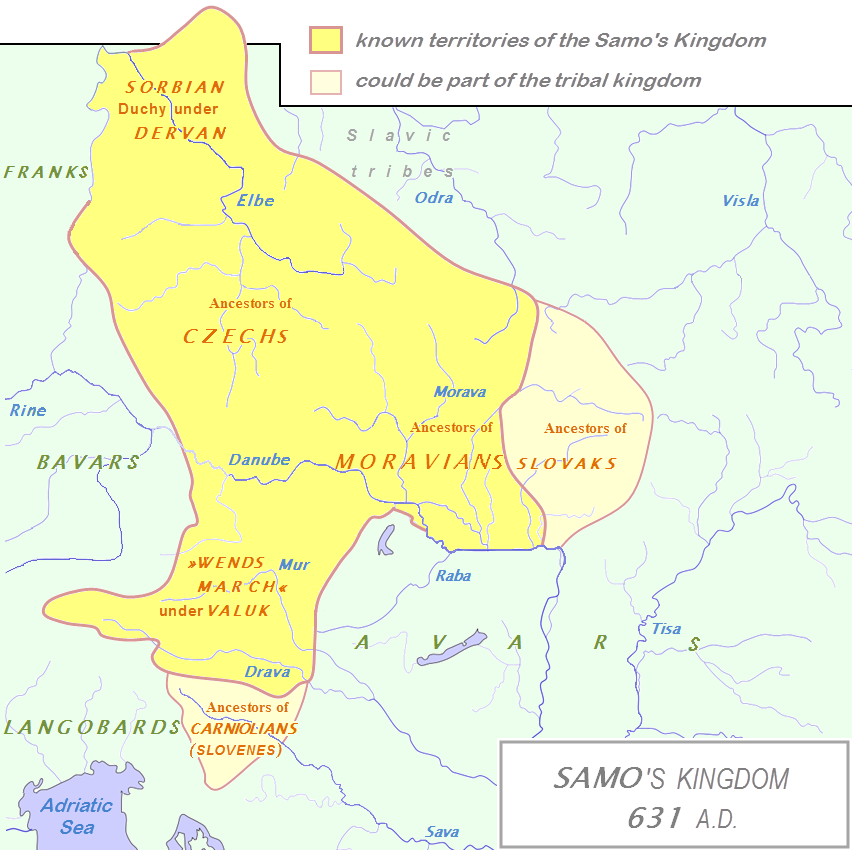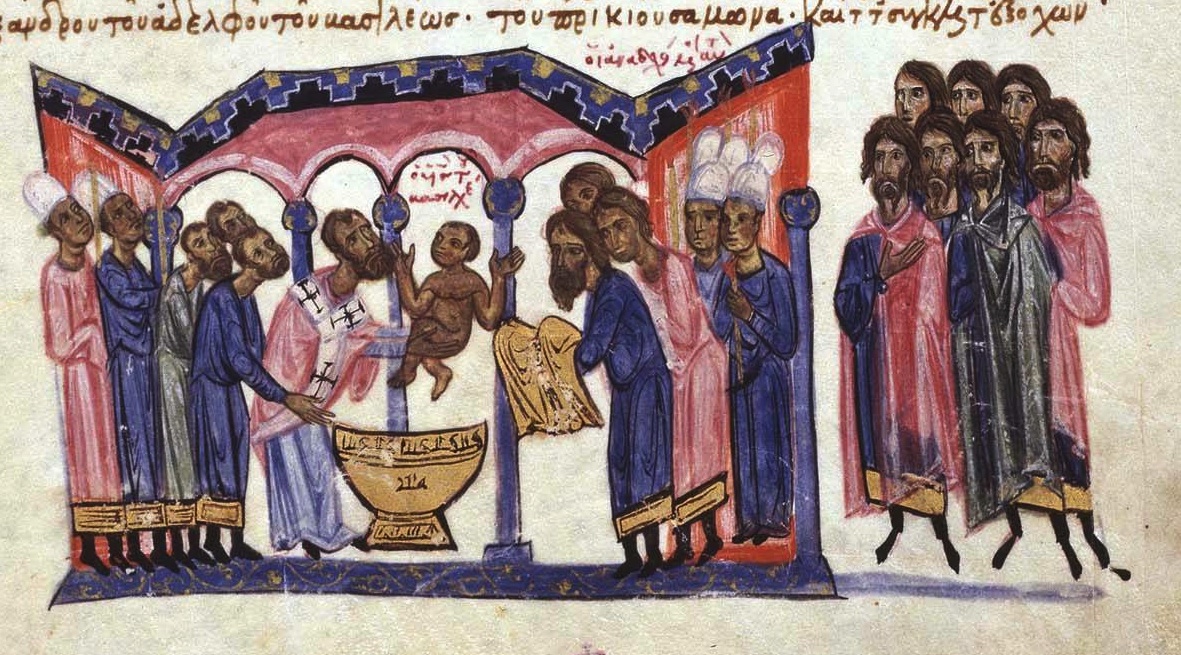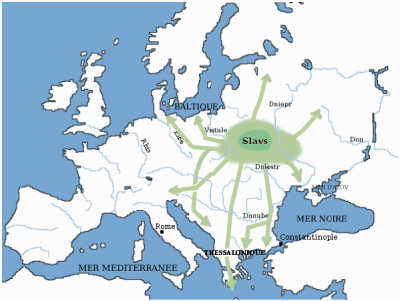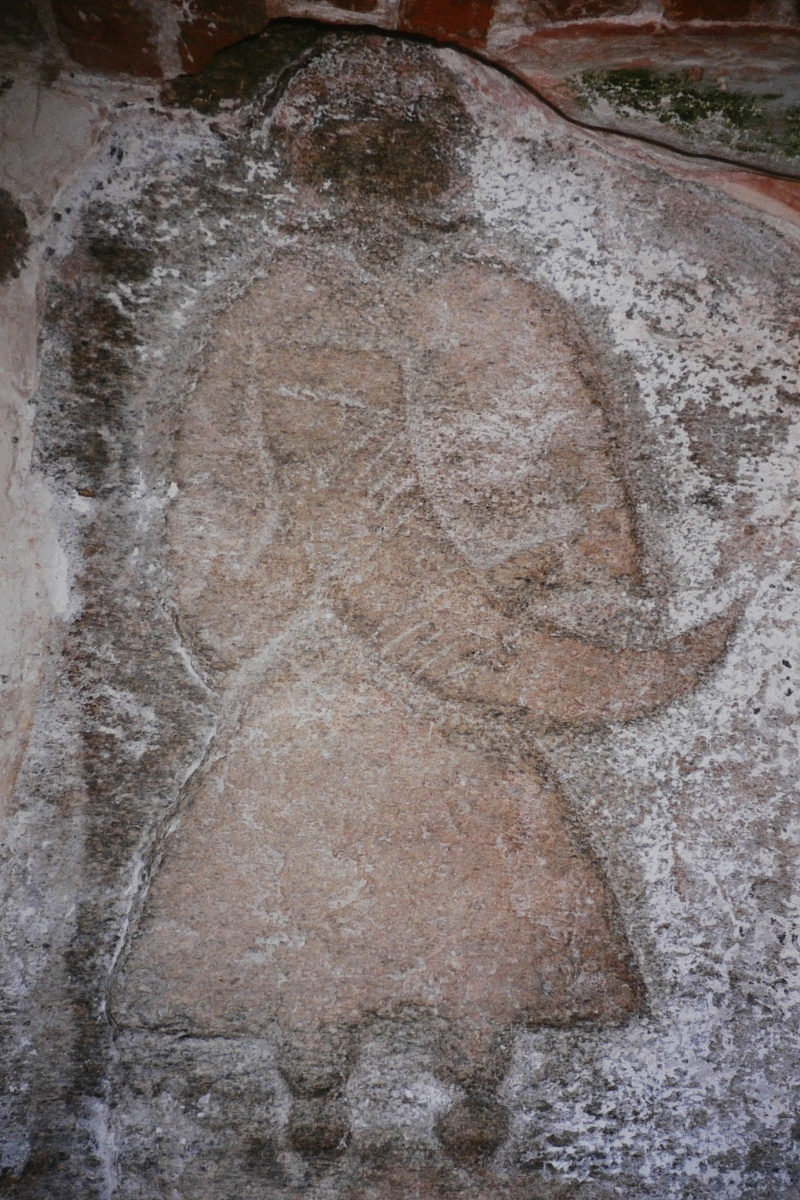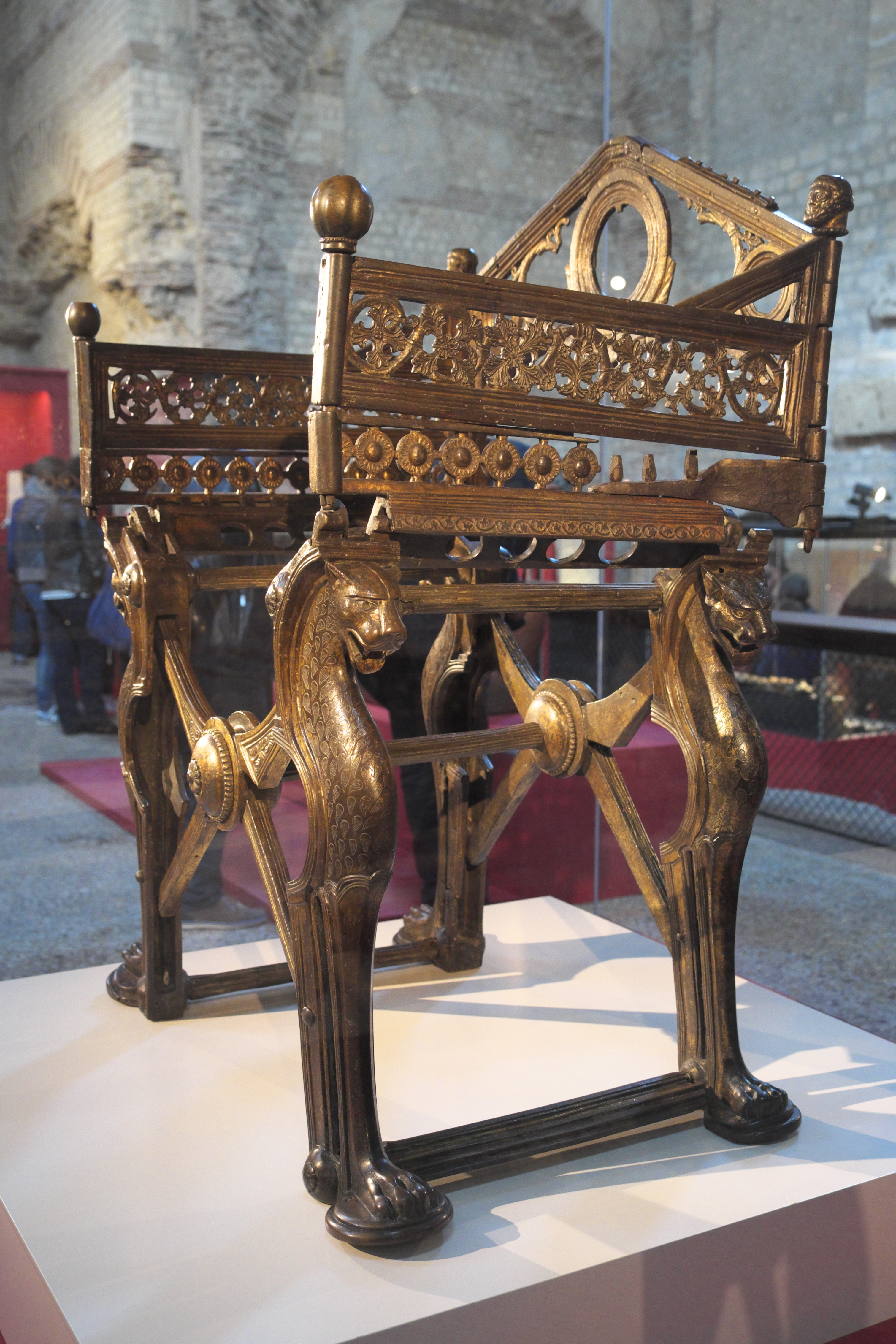|
Dervan
Dervan or Derwan ( sr-cyr, Дерван, la, Dervanus) was an early duke of the Sorbs (fl. 615–636). According to some historians and Emperor Constantine VII, Dervan was brother of the Unknown Archon, but some historians also think that Dervan may be his father, which is less likely. According to Serbian academic Tibor Živković, the migration could take place between 629 and 632, before Dervan joined Samo. He is mentioned by Fredegar in his Latin chronicle as ''dux gente Surbiorum que ex genere Sclavinorum'':Making of the Slavs, page 331 "ruler of the people of the ''Surbi'' (Sorb autonym: ''Serbja'', Serb autonym: ''Srbi'') from the nation of the Sclavenians".Curta, 109. He is the first ruler of the tribe mentioned by name. Fredegar records him being subordinate to the Franks for a long time and then joining the Slavic union of Samo. After the defeat of the Frankish king Dagobert I by king Samo near Wogastisburg in 631 or 632, Dervan declared independence from the ... [...More Info...] [...Related Items...] OR: [Wikipedia] [Google] [Baidu] |
Sorbs (tribe)
The Sorbs, also known as White Serbs in Serbian historiography, were an Early Slavic tribe settled between Saale-Elbe valley up to Lusatian Neisse (in present-day Saxony and Thuringia), and part of the Wends. In the 7th century, the tribe joined Samo's Empire and part of them emigrated from their homeland White Serbia to the Balkans. The tribe is last mentioned in the late 10th century, but its descendants are an ethnic group of Sorbs and Serbs. Etymology They are mentioned between the 6th and 10th century as ''Cervetiis'' (''Servetiis''), ''gentis (S)urbiorum'', ''Suurbi'', ''Sorabi'', ''Soraborum'', ''Sorabos'', ''Surpe'', ''Sorabici'', ''Sorabiet'', ''Sarbin'', ''Swrbjn'', ''Servians'', ''Zribia'', and ''Suurbelant''. It is generally considered that their ethnonym ''*Sŕbъ'' (plur. ''*Sŕby'') originates from Proto-Slavic language with a appellative meaning of a "family kinship" and "alliance", while other argue a derivation from Iranian-Sarmatian language. History 7th ... [...More Info...] [...Related Items...] OR: [Wikipedia] [Google] [Baidu] |
Miliduch
Miliduch (also Miliduh and pl, Miłyduch, sr, Милидух, la, Miliduoch; d. 806) was a knyaz of the Sorbs. Formerly allied to Charlemagne, the Sorbs ended their vassalage to the Franks and rebelled, invading Austrasia. Charles the Younger launched a campaign against the Slavs in Bohemia in 805, and after killing Duke Lecho of the Bohemians, Charles himself crossed the Saale with his army and killed Miliduch and knyaz Nussito (''Nessyta''), near modern-day Weißenfels Weißenfels (; often written in English as Weissenfels) is the largest town of the Burgenlandkreis district, in southern Saxony-Anhalt, central Germany. It is situated on the river Saale, approximately south of Halle. History Perhaps the firs ..., in 806. The region was laid to waste, upon which the other Slavic chieftains submitted and gave hostages.J. F. Verbruggen, The art of warfare in Western Europe during the Middle Ages, pp. 314-315 References 806 deaths Early Sorbian people 9th-ce ... [...More Info...] [...Related Items...] OR: [Wikipedia] [Google] [Baidu] |
Unknown Archon
The term Unnamed Prince of Serbia ( sr, неименовани српски архонт / ''neimenovani srpski arhont''), or the Unknown Prince ( sr, непознати кнез / ''nepoznati knez''), refers to the Serbian prince from the first half of the 7th century, who according to the '' De Administrando Imperio'' (10th century CE) supposedly led his people from their original homeland in White Serbia, to settle in the Balkans during the reign of Byzantine Emperor Heraclius (610–641), as mentioned in Emperor Constantine VII's work '' De Administrando Imperio'' (written in 950s). The work does not record his name, but states that he was the progenitor of the first Serbian dynasty (known in historiography as the Vlastimirović dynasty), and that he died before the arrival of the Bulgars (680), succeeded by his son, and then grandson. ''De Administrando Imperio'' Studies According to the accounts in DAI the first Christianization of the Serbs should be dated to 632–638; t ... [...More Info...] [...Related Items...] OR: [Wikipedia] [Google] [Baidu] |
Radulf, King Of Thuringia
Radulf was the Duke of Thuringia (''dux Thoringiae'') from 632 or 633 (certainly before 634) until his death after 642. According to the Chronicle of Fredegar, he was a son of one Chamar, a Frankish aristocrat, and rose to power under the Merovingian king Dagobert I, who appointed him as ''dux'' in the former Thuringian kingdom which Francia had conquered in 531. His installation was meant to protect the eastern border of the Frankish realm against the threatening Wends under Samo, who had defeated the king at the 631 Battle of Wogastisburg and formed an alliance with Dervan, prince of the Sorbian tribes settling in the adjacent region east of the Saale river. Radulf fought successfully against the Slavs, but subsequently refused the incorporation of the secured territories into the Austrasian kingdom. To retain his independence he allied with Fara, a descendant of the powerful Agilolfing dynasty in Bavaria who ruled over large estates along the Main river. About 640 King Sig ... [...More Info...] [...Related Items...] OR: [Wikipedia] [Google] [Baidu] |
Samo
Samo (–) founded the first recorded political union of Slavic tribes, known as Samo's Empire (''realm'', ''kingdom'', or ''tribal union''), stretching from Silesia to present-day Slovakia, ruling from 623 until his death in 658. According to Fredegarius, the only contemporary source, Samo was a Frankish merchant who unified several Slavic tribes against robber raids and violence by nearby settled Avars, showing such bravery and command skills in battle that he was elected as the "Slavic king" ( la, rex Sclavorum). In 631, Samo successfully defended his realm against the Frankish Kingdom in the three-day Battle of Wogastisburg. Reign The dates for Samo's rule are based on Fredegar, who says that he went to the Slavs in the fortieth year of Chlothar II (i.e., 623–24) and reigned for thirty five years.Curta, 109. The interpretation that places the start of Samo's reign in the year of Fredegar's arrival has been questioned on the basis that the Wends would have most li ... [...More Info...] [...Related Items...] OR: [Wikipedia] [Google] [Baidu] |
Constantine VII
Constantine VII Porphyrogenitus (; 17 May 905 – 9 November 959) was the fourth Emperor of the Macedonian dynasty of the Byzantine Empire, reigning from 6 June 913 to 9 November 959. He was the son of Emperor Leo VI and his fourth wife, Zoe Karbonopsina, and the nephew of his predecessor Alexander. Most of his reign was dominated by co-regents: from 913 until 919 he was under the regency of his mother, while from 920 until 945 he shared the throne with Romanos Lekapenos, whose daughter Helena he married, and his sons. Constantine VII is best known for the '' Geoponika'' (τά γεοπονικά), an important agronomic treatise compiled during his reign, and three, perhaps four, books; ''De Administrando Imperio'' (bearing in Greek the heading Πρὸς τὸν ἴδιον υἱὸν Ῥωμανόν), ''De Ceremoniis'' (Περὶ τῆς Βασιλείου Τάξεως), '' De Thematibus'' (Περὶ θεμάτων Άνατολῆς καὶ Δύσεως), and '' Vita Bas ... [...More Info...] [...Related Items...] OR: [Wikipedia] [Google] [Baidu] |
Floruit
''Floruit'' (; abbreviated fl. or occasionally flor.; from Latin for "they flourished") denotes a date or period during which a person was known to have been alive or active. In English, the unabbreviated word may also be used as a noun indicating the time when someone flourished. Etymology and use la, flōruit is the third-person singular perfect active indicative of the Latin verb ', ' "to bloom, flower, or flourish", from the noun ', ', "flower". Broadly, the term is employed in reference to the peak of activity for a person or movement. More specifically, it often is used in genealogy and historical writing when a person's birth or death dates are unknown, but some other evidence exists that indicates when they were alive. For example, if there are wills attested by John Jones in 1204, and 1229, and a record of his marriage in 1197, a record concerning him might be written as "John Jones (fl. 1197–1229)". The term is often used in art history when dating the care ... [...More Info...] [...Related Items...] OR: [Wikipedia] [Google] [Baidu] |
Fredegar
The ''Chronicle of Fredegar'' is the conventional title used for a 7th-century Frankish chronicle that was probably written in Burgundy. The author is unknown and the attribution to Fredegar dates only from the 16th century. The chronicle begins with the creation of the world and ends in AD 642. There are also a few references to events up to 658. Some copies of the manuscript contain an abridged version of the chronicle up to the date of 642, but include additional sections written under the Carolingian dynasty that end with the death of Pepin the Short in 768. The ''Chronicle of Fredegar'' with its ''Continuations'' is one of the few sources that provide information on the Merovingian dynasty for the period after 591 when Gregory of Tours' the ''Decem Libri Historiarum'' finishes. Authorship None of the surviving manuscripts specify the name of the author. The name "Fredegar" (modern French Frédégaire) was first used for the chronicle in 1579 by Claude Fauchet in his ... [...More Info...] [...Related Items...] OR: [Wikipedia] [Google] [Baidu] |
Sclaveni
The ' (in Latin) or ' (various forms in Greek, see below) were early Slavic tribes that raided, invaded and settled the Balkans in the Early Middle Ages and eventually became the progenitors of modern South Slavs. They were mentioned by early Byzantine chroniclers as barbarians having appeared at the Byzantine borders along with the Antes (East Slavs), another Slavic group. The Sclaveni were differentiated from the Antes and Wends (West Slavs); however, they were described as kin. Eventually, most South Slavic tribes accepted Byzantine or Frankish suzerainty, and came under their cultural influences and Chalcedonian Christianity. The term was widely used as general catch-all term until the emergence of separate tribal names by the 10th century. Customs The Sclaveni had similar if not identical customs and culture as the Antes. They were carefully described by chroniclers such as Procopius and Maurice, whose works contribute greatly to our understanding of these two Early Slav ... [...More Info...] [...Related Items...] OR: [Wikipedia] [Google] [Baidu] |
Franks
The Franks ( la, Franci or ) were a group of Germanic peoples whose name was first mentioned in 3rd-century Roman sources, and associated with tribes between the Lower Rhine and the Ems River, on the edge of the Roman Empire.H. Schutz: Tools, Weapons and Ornaments: Germanic Material Culture in Pre-Carolingian Central Europe, 400-750. BRILL, 2001, p.42. Later the term was associated with Romanization (cultural), Romanized Germanic dynasties within the collapsing Western Roman Empire, who eventually commanded the whole region between the rivers Loire and Rhine. They imposed power over many other post-Roman kingdoms and Germanic peoples. Beginning with Charlemagne in 800, Frankish rulers were given recognition by the Catholic Church as successors to the old rulers of the Western Roman Empire. Although the Frankish name does not appear until the 3rd century, at least some of the original Frankish tribes had long been known to the Romans under their own names, both as allies providi ... [...More Info...] [...Related Items...] OR: [Wikipedia] [Google] [Baidu] |
Slavic Mythology
Slavic mythology or Slavic religion is the Religion, religious beliefs, myths, and ritual practices of the Slavs before Christianisation of the Slavs, Christianisation, which occurred at various stages between the 8th and the 13th century. The South Slavs, who likely settled in the Balkan Peninsula during the 6th–7th centuries AD, bordering with the Byzantine Empire to the south, came under the sphere of influence of Eastern Christianity, beginning with the creation of writing systems for Slavic languages (first Glagolitic, and then Cyrillic script) in 855 by the brothers Saints Cyril and Methodius and the adoption of Christianity in Bulgaria in 863. The East Slavs followed with the official adoption in 988 by Vladimir the Great of Kievan Rus'. The West Slavs, West Slavs' process of Christianization was more gradual and complicated. The Moravians accepted Christianity as early as 831, the Bohemian dukes followed in 845, Slovaks accepted Christianity somewhere between the years 8 ... [...More Info...] [...Related Items...] OR: [Wikipedia] [Google] [Baidu] |
Dagobert I
Dagobert I ( la, Dagobertus; 605/603 – 19 January 639 AD) was the king of Austrasia (623–634), king of all the Franks (629–634), and king of Neustria and Burgundy (629–639). He has been described as the last king of the Merovingian dynasty to wield any real royal power. Dagobert was the first of the Frankish kings to be buried in the royal tombs at Saint Denis Basilica. Rule in Austrasia Dagobert was the eldest son of Chlothar II and Haldetrude (575–604) and the grandson of Fredegund. Chlothar had reigned alone over all the Franks since 613. In 622, Chlothar made Dagobert king of Austrasia, almost certainly to bind the Austrasian nobility to the ruling Franks. As a child, Dagobert lived under the care of the Carolingian dynasty forebears and Austrasian magnates, Arnulf of Metz and Pepin of Landen. Chlothar attempted to manage the unstable alliances he had with other noble families throughout much of Dagobert's reign. When Chlothar granted Austrasia to Dagobert ... [...More Info...] [...Related Items...] OR: [Wikipedia] [Google] [Baidu] |

